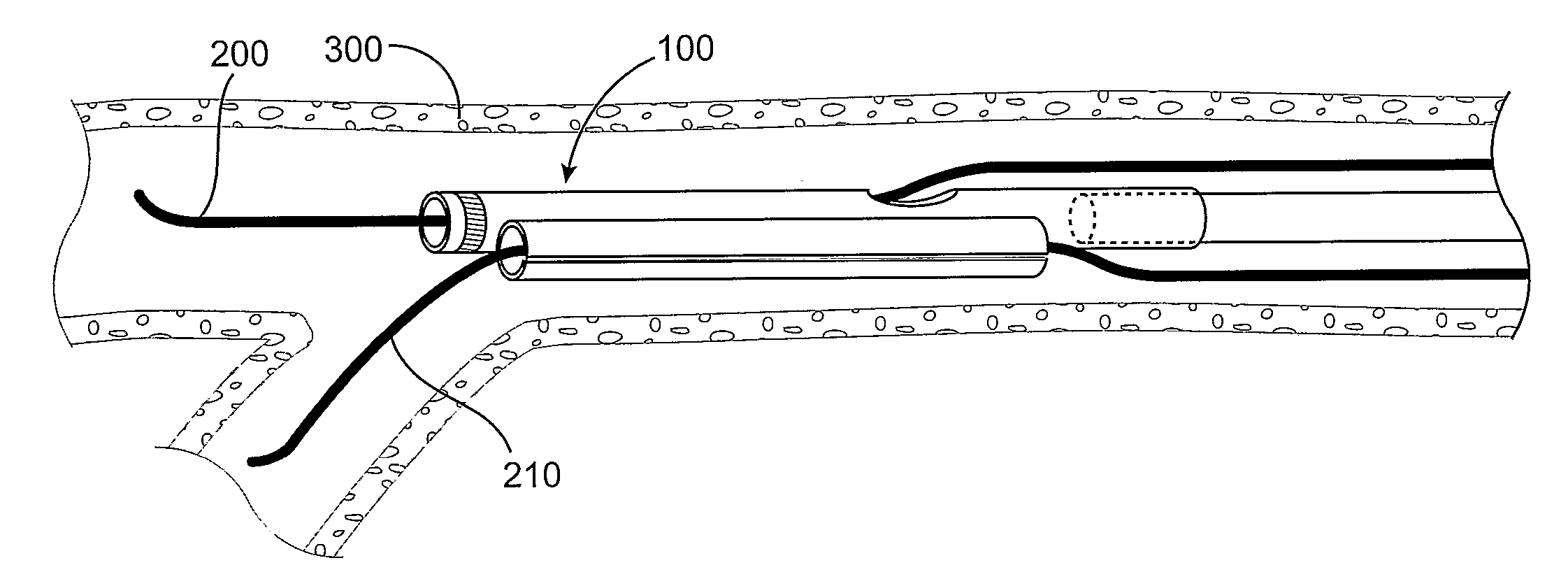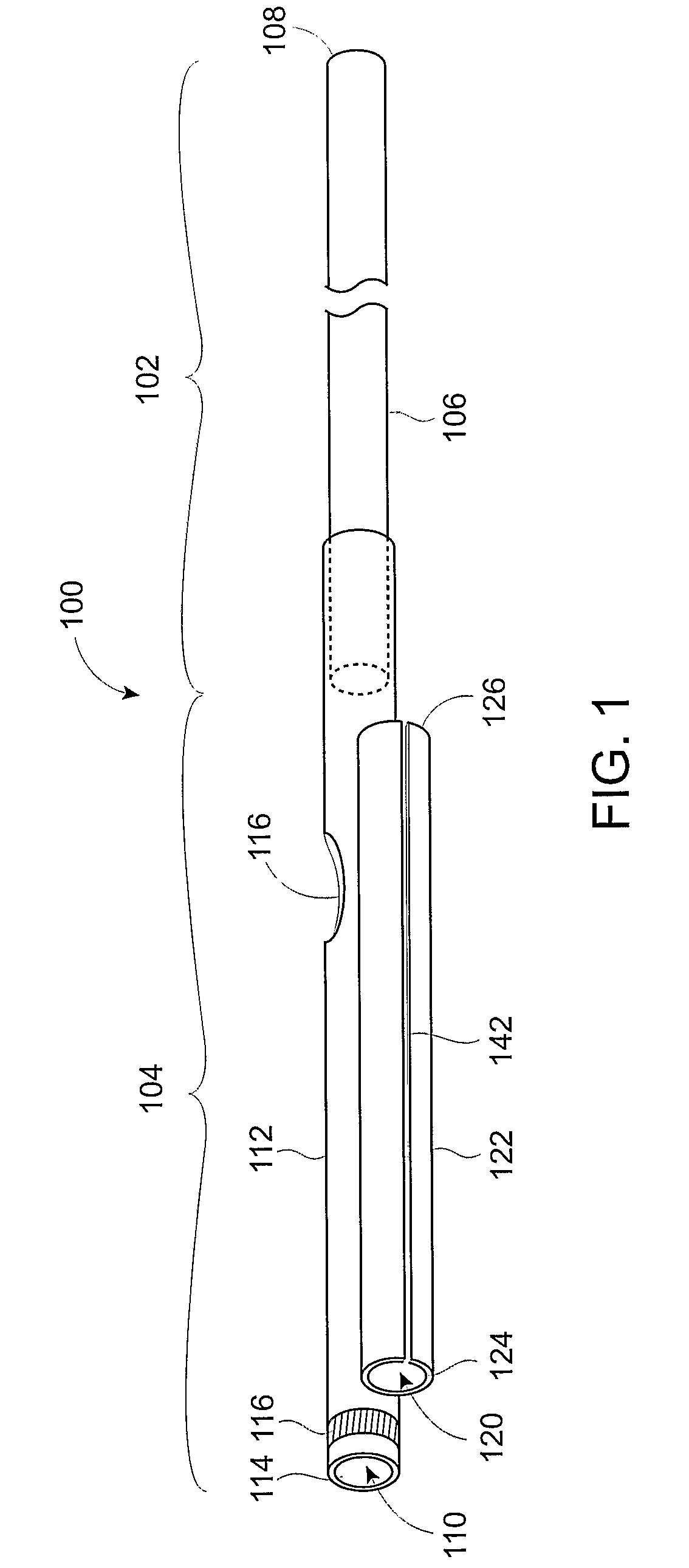Guidewire Separator Device and Method of Use
a separator device and guidewire technology, applied in the field of guidewires, catheters and catheter systems, can solve the problems of difficult separation, guidewire twisting around one another, entanglement, etc., and achieve the effect of quick and easy separation
- Summary
- Abstract
- Description
- Claims
- Application Information
AI Technical Summary
Benefits of technology
Problems solved by technology
Method used
Image
Examples
Embodiment Construction
[0071]FIG. 1 shows a guidewire separator device 100 according to the present invention. The guidewire separator device 100 is constructed with a distal portion 104 having a first lumen 110 and a second lumen 120. The distal portion 104 is mounted to or otherwise connected to a proximal portion 102. The distal portion 104 may be formed of two tubes 112, 122 joined together side-by-side or it may be formed from a two-lumen tube. In a preferred embodiment, the distal portion 104 is constructed of a flexible polymer extrusion, preferably with a polymer having a relatively low coefficient of friction. Suitable materials include, but are not limited to polyethylene, polypropylene, polyolefins, polyamides, polyamide copolymers, PTFE, FEP, and any extrudable medical grade polymer with a suitable combination of strength, flexibility and friction characteristics. The proximal portion 102 may be configured as a straight wire or stylet 106 joined to the distal portion 104, which may be formed f...
PUM
 Login to View More
Login to View More Abstract
Description
Claims
Application Information
 Login to View More
Login to View More - R&D
- Intellectual Property
- Life Sciences
- Materials
- Tech Scout
- Unparalleled Data Quality
- Higher Quality Content
- 60% Fewer Hallucinations
Browse by: Latest US Patents, China's latest patents, Technical Efficacy Thesaurus, Application Domain, Technology Topic, Popular Technical Reports.
© 2025 PatSnap. All rights reserved.Legal|Privacy policy|Modern Slavery Act Transparency Statement|Sitemap|About US| Contact US: help@patsnap.com



